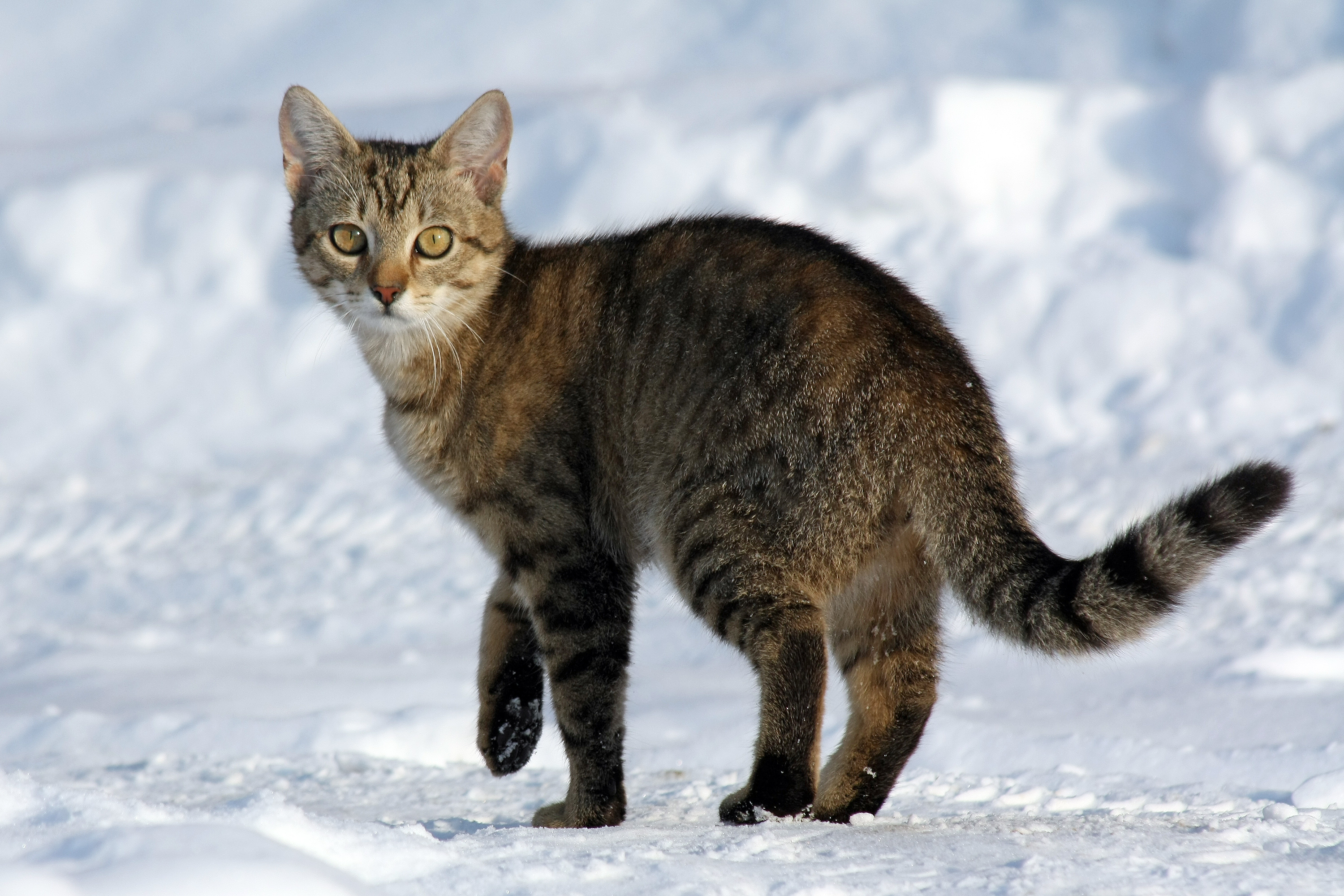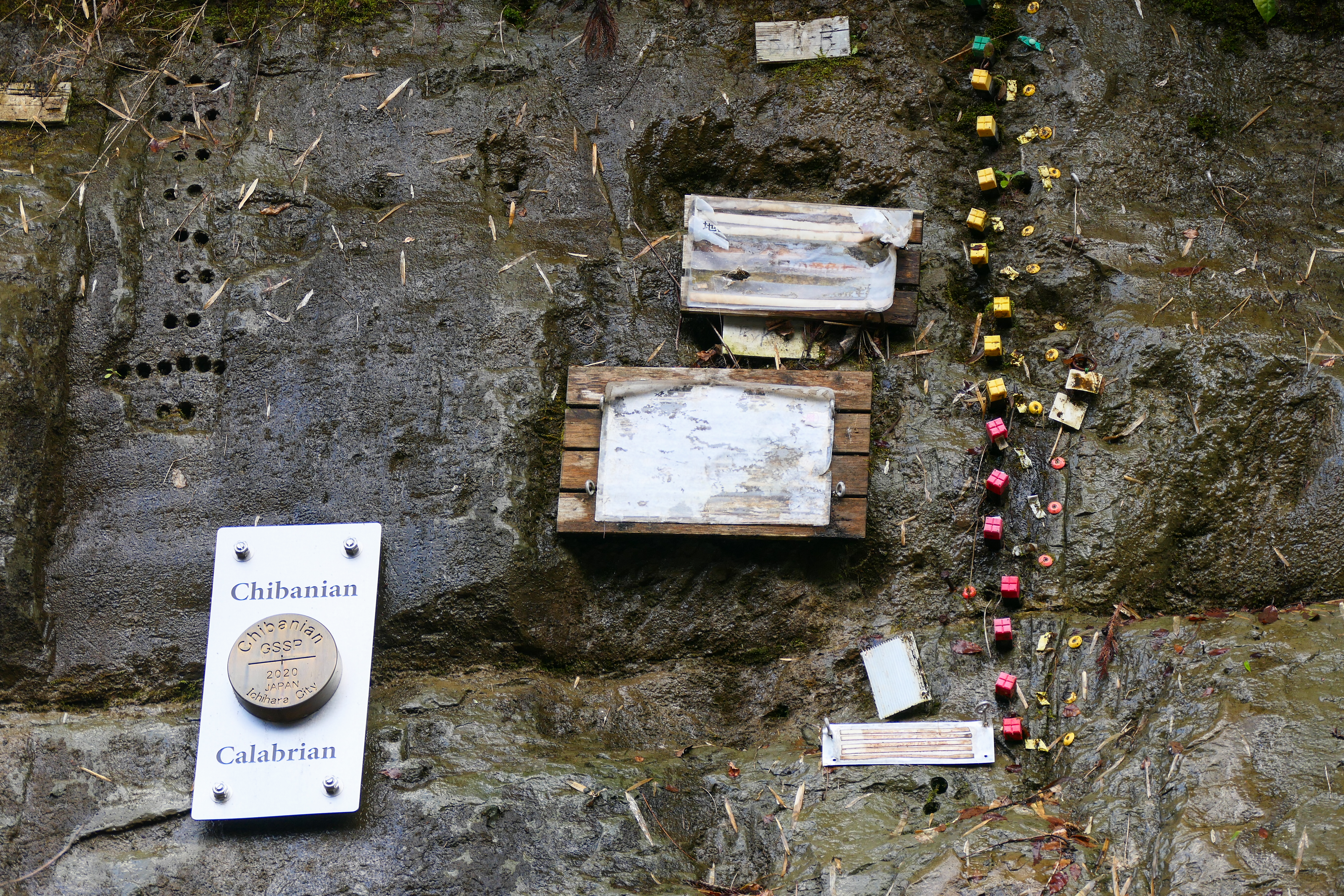|
Lycaon (genus)
''Lycaon'' is a genus of canid which includes the African wild dog (''Lycaon pictus'') and the extinct species '' Lycaon sekowei'' and ''Lycaon magnus''. Taxonomy This hypercarnivorous and highly cursorial genus is distinguished by accessory cusps on the premolars. It branched from the wolflike canids lineage during the Plio-Pleistocene. Since then, ''Lycaon'' has become lighter and tetradactyl, but has remained hypercarnivorous. ''Lycaon sekowei'' is known from the early Pleistocene epoch of South Africa and was less cursorial. Some researchers consider the extinct ''Canis'' subgenus '' Xenocyon'' as ancestral to both ''Lycaon'' and ''Cuon''. Other researchers propose that the extinct ''Canis'' (''Xenocyon'') ''falconeri'' and ''Canis'' (''Xenocyon'') ''lycaonoides'' should be classified under genus ''Lycaon'', to give the descent of three chronospecies: ''L. falconeri'' in the Late Pliocene of Eurasia → ''L. lycaonoides'' in the Early Pleistocene and the begi ... [...More Info...] [...Related Items...] OR: [Wikipedia] [Google] [Baidu] |
Pleistocene
The Pleistocene ( ; referred to colloquially as the ''ice age, Ice Age'') is the geological epoch (geology), epoch that lasted from to 11,700 years ago, spanning the Earth's most recent period of repeated glaciations. Before a change was finally confirmed in 2009 by the International Union of Geological Sciences, the cutoff of the Pleistocene and the preceding Pliocene was regarded as being 1.806 million years Before Present (BP). Publications from earlier years may use either definition of the period. The end of the Pleistocene corresponds with the end of the last glacial period and also with the end of the Paleolithic age used in archaeology. The name is a combination of Ancient Greek () 'most' and (; Latinized as ) 'new'. The aridification and cooling trends of the preceding Neogene were continued in the Pleistocene. The climate was strongly variable depending on the glacial cycle, oscillating between cold Glacial period, glacial periods and warmer Interglacial, int ... [...More Info...] [...Related Items...] OR: [Wikipedia] [Google] [Baidu] |
Canis
''Canis'' is a genus of the Caninae which includes multiple extant taxon, extant species, such as Wolf, wolves, dogs, coyotes, and golden jackals. Species of this genus are distinguished by their moderate to large size, their massive, well-developed skulls and dentition, long legs, and comparatively short ears and tails.Heptner, V. G.; Naumov, N. P. (1998). ''Mammals of the Soviet Union'' Vol.II Part 1a, SIRENIA AND CARNIVORA (Sea Cows, Wolves and Bears). Science Publishers, Inc. USA. pp. 124–129. . Taxonomy The genus ''Canis'' (Carl Linnaeus, 1758) was published in the 10th edition of Systema Naturae and included the dog-like carnivores: the domestic dog, wolves, coyotes and jackals. All species within ''Canis'' are Phylogenetics, phylogenetically closely related with 78 chromosomes and can potentially hybrid (biology), interbreed. In 1926, the International Commission on Zoological Nomenclature (ICZN) in Opinion 91 included Genus ''Canis'' on its ''Official Lists and Indexes o ... [...More Info...] [...Related Items...] OR: [Wikipedia] [Google] [Baidu] |
Carnivoran Genera
Carnivora ( ) is an order of placental mammals specialized primarily in eating flesh, whose members are formally referred to as carnivorans. The order Carnivora is the sixth largest order of mammals, comprising at least 279 species. Carnivorans are found on every major landmass and in a variety of habitats, ranging from the cold polar regions of Earth to the hyper-arid region of the Sahara Desert and the open seas. Carnivorans exhibit a wide array of body plans, varying greatly in size and shape. Carnivora are divided into two suborders, the Feliformia, containing the true felids and several animals; and the Caniformia, containing the true canids and many animals. The feliforms include the Felidae, Viverridae, hyena, and mongoose families, the majority of which live only in the Old World; cats are the only exception, occurring in the Old World and the New World, entering the Americas via the Bering land bridge. The caniforms include the Caninae, Procyonidae, bears, mustelids, ... [...More Info...] [...Related Items...] OR: [Wikipedia] [Google] [Baidu] |
Lycaon Of Arcadia
In Greek mythology, Lycaon (/laɪˈkeɪɒn/; , ) was a king of Arcadia who, in the most popular version of the myth, killed and cooked his son Nyctimus and served him to Zeus, to see whether the god was sufficiently all-knowing to recognize human flesh. Disgusted, Zeus transformed Lycaon into a wolf, while Nyctimus was restored to life. Despite being notorious for his horrific deeds, Lycaon was also remembered as a culture hero: he was believed to have founded the city Lycosura, to have established a cult of Zeus Lycaeus and to have started the tradition of the Lycaean Games, which Pausanias thinks were older than the Panathenaic Games. According to Gaius Julius Hyginus (d. AD 17), Lycaon dedicated the first temple to Hermes of Cyllene. Hyginus, ''Fabulae'225/ref> Family Lycaon was the son of Pelasgus and either the Oceanid Meliboea or Deianira, daughter of an elder Lycaon. His wife was called Cyllene, an Oread nymph who gave her name to Mount Cyllenê though s ... [...More Info...] [...Related Items...] OR: [Wikipedia] [Google] [Baidu] |
Middle Pleistocene
The Chibanian, more widely known as the Middle Pleistocene (its previous informal name), is an Age (geology), age in the international geologic timescale or a Stage (stratigraphy), stage in chronostratigraphy, being a division of the Pleistocene Epoch within the ongoing Quaternary Period. The Chibanian name was officially ratified in January 2020. It is currently estimated to span the time between 0.7741 annum, Ma (774,100 years ago) and 0.129 Ma (129,000 years ago), also expressed as 774.1–129 ka. It includes the transition in palaeoanthropology from the Lower Paleolithic, Lower to the Middle Paleolithic over 300 ka. The Chibanian is preceded by the Calabrian (stage), Calabrian and succeeded by the Late Pleistocene. The beginning of the Chibanian is the Brunhes–Matuyama reversal, when the Earth's magnetic field last underwent reversal. Its end roughly coincides with the termination of the Penultimate Glacial Period and the onset of the Last Interglacial period (correspondin ... [...More Info...] [...Related Items...] OR: [Wikipedia] [Google] [Baidu] |
Cuon
The dhole ( ; ''Cuon alpinus'') is a Canidae, canid native to South Asia, South, East Asia, East and Southeast Asia. It is anatomically distinguished from members of the genus ''Canis'' in several aspects: its skull is convex rather than concave in profile, it lacks a third lower molar (tooth), molar, and the upper molars possess only a single Cusp (dentistry), cusp as opposed to between two and four. During the Pleistocene, the dhole ranged throughout Asia, with its range also extending into Europe (with a single putative, controversial record also reported from North America) but became restricted to its historical range 12,000–18,000 years ago. It is now extinct in Central Asia, parts of Southeast Asia, and possibly the Korean peninsula and Russia. Genetic evidence indicates that the dhole was the result of reticulate evolution, emerging from the Hybrid (biology), hybridization between a species closely related to genus ''Canis'' and one from a lineage closely related ... [...More Info...] [...Related Items...] OR: [Wikipedia] [Google] [Baidu] |
Xenocyon
''Xenocyon'' ("strange dog") is an extinct group of canids, either considered a distinct genus or a subgenus of ''Canis''. The group includes ''Canis'' (''Xenocyon'') ''africanus'', ''Canis'' (''Xenocyon'') ''antonii'' and ''Canis'' (''Xenocyon'') ''falconeri'' that gave rise to ''Canis'' (''Xenocyon'') ''lycanoides''. The hypercarnivorous ''Xenocyon'' is thought to be closely related and possibly ancestral to modern dhole and the African wild dog, as well as the insular Sardinian dhole. Taxonomy ''Xenocyon'' is proposed as a subgenus of ''Canis'' named ''Canis'' (''Xenocyon''). One taxonomic authority proposes that as part of this subgenus, the group named ''Canis'' (''Xenocyon'') ex gr. ''falconeri'' (ex gr. meaning "of the group including") would include all of the large hypercarnivorous canids that inhabited the Old World during the Late Pliocene–Early Pleistocene: ''Canis'' (''Xenocyon'') ''africanus'' in Africa, ''Canis'' (''Xenocyon'') ''antonii'' in Asia and ''Canis ... [...More Info...] [...Related Items...] OR: [Wikipedia] [Google] [Baidu] |
Subgenus
In biology, a subgenus ( subgenera) is a taxonomic rank directly below genus. In the International Code of Zoological Nomenclature, a subgeneric name can be used independently or included in a species name, in parentheses, placed between the generic name and the specific epithet: e.g. the tiger cowry of the Indo-Pacific, ''Cypraea'' (''Cypraea'') ''tigris'' Linnaeus, which belongs to the subgenus ''Cypraea'' of the genus ''Cypraea''. However, it is not mandatory, or even customary, when giving the name of a species, to include the subgeneric name. In the International Code of Nomenclature for algae, fungi, and plants The ''International Code of Nomenclature for algae, fungi, and plants'' (ICN or ICNafp) is the set of rules and recommendations dealing with the formal botanical names that are given to plants, fungi and a few other groups of organisms, all tho ... (ICNafp), the subgenus is one of the possible subdivisions of a genus. There is no limit to the number of divisio ... [...More Info...] [...Related Items...] OR: [Wikipedia] [Google] [Baidu] |
Tetradactyl
In biology, dactyly is the arrangement of digits (fingers and toes) on the hands, feet, or sometimes wings of a tetrapod animal. The term is derived from the Greek word () meaning "finger." Sometimes the suffix "-dactylia" is used. The derived adjectives end with "-dactyl" or "-dactylous." As a normal feature Pentadactyly Pentadactyly (from Greek "five") is the condition of having five digits on each limb. It is traditionally believed that all living tetrapods are descended from an ancestor with a pentadactyl limb, although many species have now lost or transformed some or all of their digits by the process of evolution. However, this viewpoint was challenged by Stephen Jay Gould in his 1991 essay "Eight (or Fewer) Little Piggies," where he pointed out polydactyly in early tetrapods and described the specializations of digit reduction. Despite the individual variations listed below, the relationship is to the original five-digit model. In reptiles, the limbs are pentadacty ... [...More Info...] [...Related Items...] OR: [Wikipedia] [Google] [Baidu] |
Plio-Pleistocene
The Plio-Pleistocene is an informally described geological pseudo-period, which begins about 5 million years ago (Mya) and, drawing forward, combines the time ranges of the formally defined Pliocene and Pleistocene epochs—marking from about 5 Mya to about 12 kya. Nominally, the Holocene epoch—the last 12 thousand years—would be excluded, but most Earth scientists would probably treat the current times as incorporated into the term "Plio-Pleistocene"; see below. In the contexts of archaeology, paleontology, and paleoanthropology, the Plio-Pleistocene is a very useful period to which scientists may assign the long and continuous run in East Africa of datable sedimentary layers and their contents (e.g. the Bouri Formation). These contents collectively present a focused view of the continuous evolution of the region's large vertebrates, especially the evolution of some African apes ( hominids) to the earliest hominins; and then the development of the early humans and ... [...More Info...] [...Related Items...] OR: [Wikipedia] [Google] [Baidu] |
Premolar
The premolars, also called premolar Tooth (human), teeth, or bicuspids, are transitional teeth located between the Canine tooth, canine and Molar (tooth), molar teeth. In humans, there are two premolars per dental terminology#Quadrant, quadrant in the permanent teeth, permanent set of teeth, making eight premolars total in the mouth. They have at least two Cusp (dentistry), cusps. Premolars can be considered transitional teeth during chewing, or mastication. They have properties of both the canines, that lie anterior and molars that lie Posterior (anatomy), posterior, and so food can be transferred from the canines to the premolars and finally to the molars for grinding, instead of directly from the canines to the molars. Human anatomy The premolars in humans are the maxillary first premolar, maxillary second premolar, mandibular first premolar, and the mandibular second premolar. Premolar teeth by definition are permanent teeth Anatomical terms of location#Proximal and distal, ... [...More Info...] [...Related Items...] OR: [Wikipedia] [Google] [Baidu] |
African Wild Dogs
The African wild dog (''Lycaon pictus''), also called painted dog and Cape hunting dog, is a wild canine native to sub-Saharan Africa. It is the largest wild canine in Africa, and the only extant member of the genus '' Lycaon'', which is distinguished from ''Canis'' by dentition highly specialised for a hypercarnivorous diet and by a lack of dewclaws. It is estimated that there are around 6,600 adults (including 1,400 mature individuals) living in 39 subpopulations, all threatened by habitat fragmentation, human persecution and outbreaks of disease. As the largest subpopulation probably consists of fewer than 250 individuals, the African wild dog has been listed as endangered on the IUCN Red List since 1990. The African wild dog is a specialized hunter of terrestrial ungulates, mostly hunting at dawn and dusk, but also displays diurnal activity. It captures its prey by using stamina and cooperative hunting to exhaust them. Its natural competitors are lions and spotted hyenas: ... [...More Info...] [...Related Items...] OR: [Wikipedia] [Google] [Baidu] |






